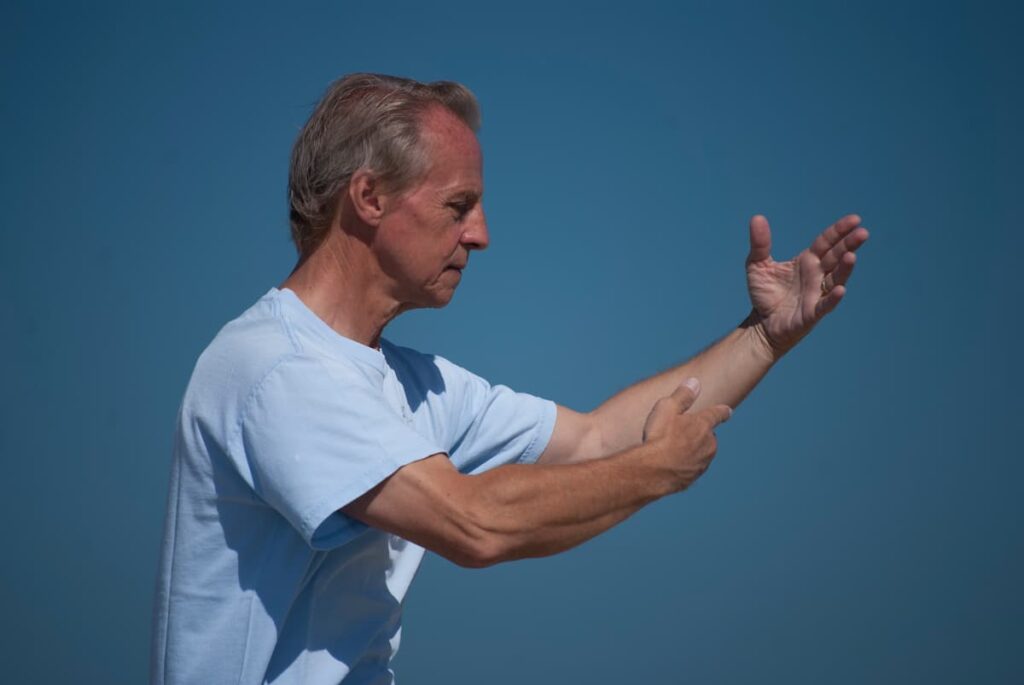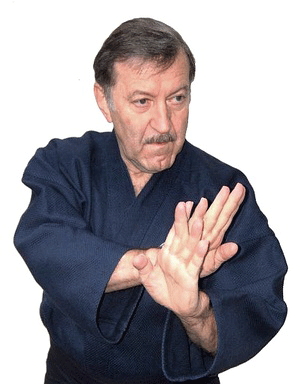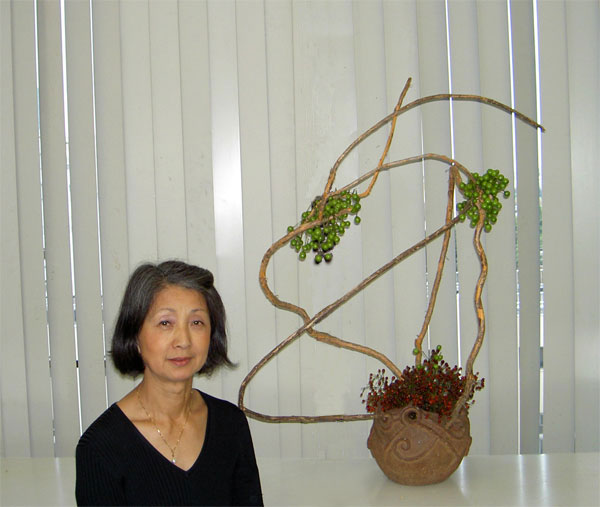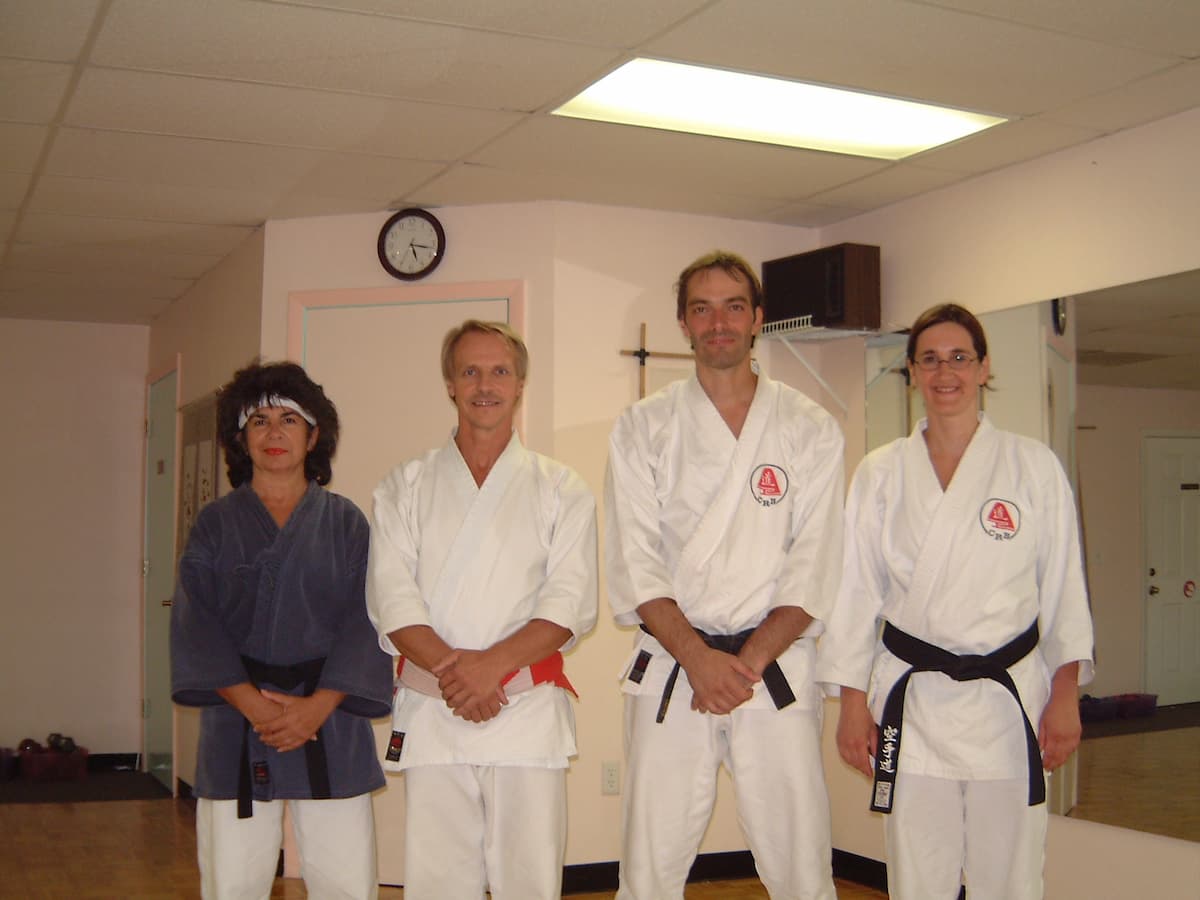Life is a journey, and along the way, if we’re fortunate, we encounter extraordinary teachers who shape our paths, challenge our limits, and inspire us to explore new dimensions. For us, the journey has been deeply enriched by learning from masters of martial arts and traditional Japanese arts, who not only shared their skills but opened doors to profound life lessons.
This post is a tribute to the wisdom and generosity of three exceptional individuals—Hilmar Fuchs, Roland Habersetzer, and Nobuko Relnick—whose teachings have deeply influenced our lives and our understanding of martial arts, mindfulness, and the essence of life itself.

Hilmar Fuchs: The Laughing Master of Martial and Healing Arts
From the very beginning of our martial arts journey, Hilmar Fuchs has been a guiding light. He introduced us to the dual essence of martial arts: their powerful potential for self-defense and their equally profound capacity for healing. What sets Hilmar apart isn’t just his incredible skill—though he is an 8th Dan Karate, Kobudo, and Tai Chi master—but his contagious sense of humor and his insistence on keeping the spirit of play alive.
The Principles of Martial Arts Are Life Principles
One of Hilmar’s core teachings is that martial arts are not just about physical mastery but embody a way of living. For example:
- Balance: Whether in a Tai Chi form or managing daily challenges, balance is crucial. A well-executed movement mirrors the balanced approach we need to face adversity.
- Adaptability: Hilmar often reminds us that rigidity is the enemy. Just as water flows around obstacles, life requires us to adapt.
- Mindfulness in Motion: Martial arts are often described as a moving meditation. With Hilmar’s guidance, we learned to focus deeply on every movement, a practice that translates into everyday mindfulness.
The Child Within
Another hallmark of Hilmar’s philosophy is his emphasis on maintaining a sense of wonder and play. “Don’t let the child within you fade,” he often says. This playful attitude has shaped how we approach not just martial arts but life itself—with curiosity, laughter, and lightness.
Hilmar’s teachings resonate far beyond the dojo. Studies suggest that mindfulness practices, such as Tai Chi, can reduce stress, improve balance, and enhance overall well-being. A 2020 review published in Frontiers in Psychology highlighted Tai Chi’s ability to lower anxiety and boost cognitive function, proving its holistic benefits.

Roland Habersetzer: The Philosopher of Budo
In our time in Europe, we had the privilege of learning with and drawing inspiration from Roland Habersetzer, one of Hilmar’s mentors. Roland is a towering figure in martial arts, holding a 9th Dan rank in Karate, Kobudo, and Tai Chi. Beyond his technical mastery, he is a prolific writer, with numerous books exploring the philosophical and historical aspects of martial arts.
Budo as a Way of Being
Roland’s teachings delve deep into the philosophy of Budo—the martial way. He challenges practitioners to see beyond the physical techniques and to embrace martial arts as a lifelong journey of self-improvement and introspection. This perspective is particularly resonant in today’s fast-paced world, where slowing down and reflecting on one’s purpose is often overlooked.
The Ethical Warrior
One of Roland’s most impactful lessons is the concept of the ethical warrior—someone who wields power responsibly, always striving for harmony rather than conflict. His teachings encourage us to think deeply about the responsibility that comes with strength and skill, a concept that feels particularly relevant in today’s polarized world.

Nobuko Relnick: The Poetry of Ikebana and Jodo
While our martial arts teachers shaped our understanding of physical movement, Nobuko Relnick opened our eyes to the beauty of stillness and creative expression. Nobuko is a master of Sogetsu Ikebana, the Japanese art of flower arrangement, holding the highest teaching certificate—the Riji rank. She is also a practitioner of Jodo, the traditional Japanese way of the staff.
Ikebana: Harmony in Imperfection
Through Ikebana, Nobuko taught us to find beauty in asymmetry and imperfection. This resonates with the Japanese aesthetic of wabi-sabi, which celebrates the transient and imperfect nature of life. Her arrangements remind us to look for harmony not just in flowers but in the world around us.
Art as Healing
One of Nobuko’s passions is using Ikebana as a tool for healing. She volunteers her skills to help cancer patients at the Cancer Lifeline, demonstrating how creative practices can foster emotional resilience. Her work aligns with research highlighting the therapeutic benefits of creative expression. A 2016 study in Arts & Health found that engaging in artistic activities can significantly reduce anxiety and improve emotional well-being.
Jodo: Focus and Discipline
In addition to Ikebana, Nobuko practices Jodo, an art form that emphasizes precision and focus. Combining these practices, she exemplifies how art and discipline can coexist, each enriching the other.
The Common Threads: Lifelong Learning and Community
Despite their different mediums—martial arts, flower arrangement, or healing arts—Hilmar, Roland, and Nobuko share some striking similarities in their teachings.
- A Commitment to Lifelong Learning: None of these masters sees their art as something to be “completed.” Instead, they embrace the journey of constant growth and exploration.
- The Power of Community: Each of these teachers has built a community around their art, fostering connections and passing down traditions to future generations.
- The Integration of Mind, Body, and Spirit: Whether through a kata, a flower arrangement, or a philosophical discussion, these masters emphasize holistic growth, blending physical practice with mental and emotional development.
Learning from the Masters in Today’s World
In a world increasingly dominated by quick fixes and instant gratification, the lessons we’ve learned from Hilmar, Roland, and Nobuko feel especially poignant. Their teachings remind us of the value of patience, the importance of staying curious, and the joy of immersing oneself in a lifelong practice.
Modern trends reflect a growing appreciation for these timeless principles. Practices like mindfulness, yoga, and martial arts are becoming mainstream, with millions seeking their physical and psychological benefits. Ikebana and other creative arts are also finding a resurgence as people turn to hobbies that provide a sense of calm and purpose.
Join the Conversation
We hope this glimpse into the lives and lessons of these extraordinary teachers inspires you as much as they’ve inspired us. Have you had a teacher or mentor who shaped your journey? Are you exploring a practice that blends physical and mental growth?
We’d love to hear your stories and reflections. Share them in the comments or reach out directly—we’re always eager to learn from others’ experiences and continue the conversation.
Let’s explore together the balance, joy, and beauty that lifelong learning and practice bring to our lives.
